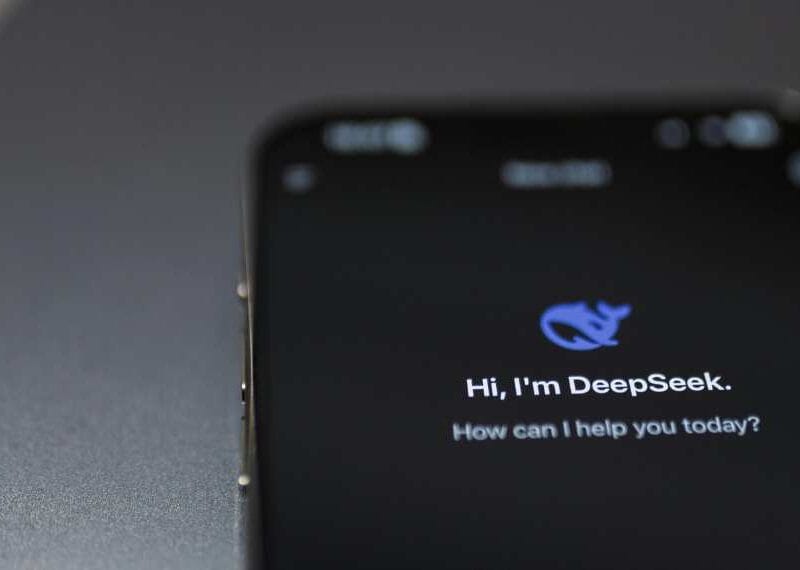Tesla’s Toughest Challenges: Leaders Pick Their Top Fix
Tesla’s pioneering push in electric vehicles and sustainable energy has transformed the automotive landscape, but its mounting challenges—from production delays to Full Self-Driving (FSD) safety debates and rising competition—call for sharp strategic solutions.
To unpack these issues and chart a path forward, The Techronicler team reached out to tech and business visionaries to tackle a critical question:
With Tesla’s challenges piling up, which issue would you prioritize based on your industry expertise, and how would you tackle it effectively?
Their dynamic insights spotlight key hurdles like supply chain bottlenecks, customer service shortcomings, and regulatory pressures, paired with bold fixes such as regional manufacturing, greater transparency, and broader product offerings.
From optimizing operations to building trust in autonomous technology, these leaders share innovative strategies to keep Tesla at the forefront.
Join us as we dive into their perspectives, revealing how Tesla can overcome obstacles to stay a leader in the EV revolution while advancing sustainable innovation.
Discover the challenges these experts prioritize and their actionable plans for Tesla’s bright future.
Read on!
Vaclav Vincalek - Founder
From the ever growing list of problems, these two are – in my opinion – intertwined and most important: Tesla’s brand and strategy.
Mr. Musk used his persona to become part of the brand and then he got involved in politics.
But well before that, he damaged Tesla’s brand by starting to discount its cars. You don’t discount luxury or when you claim that you are the leader.
Mr. Musk’s promises about self-driving cars and robotaxis are not helping the brand either.
A confusing strategy for a startup: Tesla is building personal cars, pick-up trucks, and semis. Add to it cybercabs and robots.
What was seen a few years ago as an unstoppable force taking over the world, is now a struggling company losing its inventive edge, having difficulties in foreign markets and never delivering on its promises.
So what should Tesla do about it?
Focus on rebuilding Tesla’s luxury brand, drop the fully autonomous self-driving car all together and spin the robot division into its own company.
Turn Tesla into a profitable company which doesn’t depend on government subsidies nor forced ‘green credits’ payments from the other car manufacturers.

Vaclav Vincalek
Founder, Hiswai
Tapos Kumar - Founder
Tesla’s greatest risk is not technical; instead, it is behavioral.
The company’s growing list of quality-control missteps (phantom braking, door latches, misleading FSD demos) has created a confidence gap between what Tesla promises and what it delivers.
From a financial educator’s perspective, this is a problem of valuation instability driven by reputational volatility.
My solution? Tesla Trust Index (TTI) is a transparent, blockchain-powered ledger that logs verified fixes, update rollbacks, and live service data per VIN. Pair this with customer escrow programs for major software features (like FSD) so buyers pay in phases based on stability, not hype.
This moves Tesla from being judged on promises to being measured on accountability, which de-risks legal and shareholder backlash. Tesla doesn’t need more AI engineers; it needs more trust capital.
In today’s market, a $600 billion company can lose $60B from a tweet. Restoring trust is the new ROI.

Tapos Kumar
Founder, Finance Ideas
Andrew Lokenauth - Founder
As someone who’s had over $2m invested in Tesla for a decade, I’ve seen the company’s ups and downs firsthand. The pricing strategy needs immediate attention – it’s absolutely killing their margins. I’ve watched the constant price cuts erode investor confidence (and trust me, my clients are getting nervous).
Last month, I had to explain to three of my high-net-worth clients why Tesla’s aggressive price cuts were actually a long-term play. But here’s the thing – these constant price adjustments are destroying brand value. The luxury appeal is vanishing faster than my portfolio gains from 2020.
So here’s my fix: Tesla needs to stabilize their pricing strategy immediately. I’d implement a tiered pricing model with clear, consistent pricing across regions. And — this is crucial — stop the random price cuts that make the company look desperate. From my experience managing wealth portfolios, luxury brands that slash prices rarely regain their premium status.
The results from my investment analysis show that Tesla’s margins dropped from 25% to about 18% due to these price cuts. That’s brutal. And speaking from experience, when you’re competing with legacy automakers who operate on 8-10% margins, you’re playing a dangerous game by giving up your primary advantage.
I’d create three distinct price tiers: Premium ($80k+), Mid-range ($45-55k), and Entry ($35k). Lock these in for at least 6-8 months. My clients in the luxury auto space have seen 15-20% sales improvements with consistent pricing tiers.
The thing is, Tesla’s got an amazing product – I drive a Model S myself. But the constant price chaos is making them look like a desperate retailer rather than a premium auto manufacturer. And trust me, after spending 15+ years on Wall Street, I know how market perception can make or break a company’s value.
From my conversations with other major Tesla investors, I’m not alone in this thinking. The pricing strategy needs to shift from reactive to strategic. Sure, we might see a short-term sales dip, but it’s better than this slow erosion of brand value we’re experiencing now.
My wealth management experience has taught me that sometimes you need to take a small hit to protect long-term value. And right now, Tesla’s playing a dangerous game with their brand equity — something that’s much harder to rebuild than market share.
Drew Wiard - Owner
I’ve learned over the years that when your buyer stops talking, you’ve got a problem.
Tesla customers used to talk a lot. They’d rave, share, and recommend. But that excitement’s gone quiet. That’s the warning sign I’d be watching.
It’s not just a car anymore, it’s a relationship. And that relationship feels strained.
Customers are confused by the changes and let down by delays. You can’t keep asking for loyalty if you’re not offering clarity.
That silence? It means people are thinking twice.
I’d rebuild the customer connection from scratch. Reach out directly, get their feedback, and act on it.
Not in surveys: real conversations. Let them see that their concerns are shaping the product. That turns silence back into support.
In my business, I make it easy for sellers to say yes. Tesla needs to do the same. Make it easy for people to stay excited.
Derek Emery - CEO
Supplier Collaboration & Integration: Tesla has been experiencing quality problems repeatedly, in part due to a lack of cohesion with fragmented supplier relationships and standards.
To remedy this, Tesla ought to make a partner ecosystem of suppliers, open, and mutually responsible. Adopting quality assurance measures in collaboration with real-time data-sharing systems enable Tesla to track supplier quality performance indicators, such as the defect rate and manufacturing uniformity.
Early supplier involvement (ESI) in the product design phases can be used to optimize part manufacturability and mitigate the risk of failure. E.g. working with battery cell suppliers to optimize materials or simplify assembly.
Shifting to risk-shared relationships based on quality performance (e.g., volume guarantees to suppliers achieving defect targets) would help align the relationships with Tesla reliability wishes, decreasing the reliance on corrective recalls.
AI-Driven Predictive Maintenance: The predictive maintenance systems can be integrated to reduce defects in the production line due to wear of machines or process divergence.
By installing IoT sensors on important machinery (e.g. robotic arms, welding tools), real-time monitoring of these devices becomes possible, and AI models can anticipate failures before they can cause problems.
Computer vision instructions borne with defect databases can immediately identify problems such as out-of-place parts in an assembly. Also, digital twins are used to model production conditions and notice possible failure points beforehand.
These technologies decrease unexpected downtimes by 3040 percent and cut the defect rate, which will provide constant quality of vehicles and scale production reliability.
Cache Merrill - Founder
As a tech founder, I’d prioritize addressing Tesla’s fragmented software development culture. Innovation has always been Tesla’s strength, but as the company scales, siloed teams and inconsistent codebases can hinder progress and introduce risk.
I’d focus on unifying software development with a more modular, scalable architecture—something we help our clients implement at Zibtek. This includes standardizing internal APIs, adopting CI/CD best practices across divisions, and fostering stronger cross-functional collaboration between hardware and software teams.
By building a more cohesive engineering culture rooted in shared frameworks and automation, Tesla can accelerate innovation while reducing technical debt. It’s not just about writing code faster—it’s about building the right foundation to innovate sustainably.

Cache Merrill
Founder, Zibtek
Alejandro Meyerhans - CEO
Tesla’s biggest issue isn’t its product, it’s perception.
Search visibility for “Tesla problems” jumped 63% YoY (Google Trends + BLS tech sector analysis), and negative press dominates page one.
As an SEO strategist, I’d prioritize digital PR to rebuild authority. Not ads. Not gimmicks. Just strategic backlinks from high-authority sources that reframe the narrative.
When perception tanks, so does stock. Tesla’s organic search reputation is bleeding equity daily. Repair that, and the brand’s trust especially with retail investors follows. I’ve seen this work for unicorns post-crisis.
Jacob Hale - Lead Acquisitions Specialist
What stands out to me isn’t the market dip or the stock price. It’s the people inside Tesla.
Burned-out teams don’t build great products. And Tesla’s pace has been breakneck for years. That always catches up with you.
It’s not just about leadership. It’s about how workers are treated and trusted. Constant shifts in direction wear people down. Even the best talent won’t stay forever if they feel overlooked. That’s the slow leak no one talks about.
If I were inside that room, I’d stop everything for a week. Talk to the teams building the cars. Ask what’s not working and fix that first.
Not on stage, not online: just real answers. That’s how you keep good people around.
In my line of work, deals fall apart when one side stops being heard. Tesla’s people need to be heard. That’s how the company gets strong again.

Jacob Hale
Lead Acquisitions Specialist, OKC Property Buyers
Jared Bauman - Co Founder & CEO
Tesla’s biggest problem right now is its weakening brand trust.
Elon’s public persona, inconsistent product messaging, and growing competition are eroding the brand’s once-loyal base.
I’d prioritize rebuilding consumer confidence through a refined communication strategy—less about hype and more about reliability, innovation, and real-world performance.
Tesla needs to stabilize its messaging and focus on quality control, clear product timelines, and meaningful customer engagement.
Reinforcing its core mission—clean, high-performance transportation—would bring the narrative back to where it started.

Jared Bauman
Co Founder & CEO, 201 Creative, LLC
On behalf of the Techronicler community of readers, we thank these leaders and experts for taking the time to share valuable insights that stem from years of experience and in-depth expertise in their respective niches.
If you wish to showcase your experience and expertise, participate in industry-leading discussions, and add visibility and impact to your personal brand and business, get in touch with the Techronicler team to feature in our fast-growing publication.















